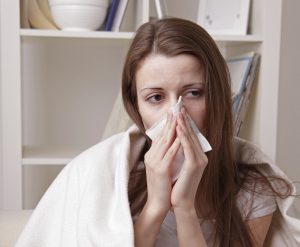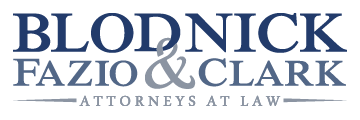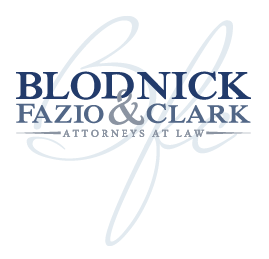
According to the Centers for Disease Control and Prevention (CDC), the flu is a contagious respiratory illness that infects the nose, throat, and sometimes the lungs. The flu can cause mild to severe illness and, in some instances, can lead to death. It is characterized by various symptoms, including, but not limited to, fever, cough, sore throat, runny or stuffy nose, body aches, and headache.
According to a 2018 New York City press release, the Health Commissioner Mary T. Bassett stated that if an individual is sick with the flu, he or she should stay home for at least 24 hours after his or her fever is gone. In the press release, DCA Commissioner Lorelei Salas reminded individuals who contract the flu to not spread it to others, instead stay home and get better. Ms. Salas also reiterated to businesses that they are legally required to provide sick leave to their employees.
Paid Safe and Sick Time Law
Under New York City’s Paid Safe and Sick Time Law, employers with five or more employees who work more than 80 hours a calendar year in New York City must be provided paid sick leave. Employers with fewer than five employees must provide unpaid sick leave. Employers with one or more domestic workers who have worked for the employer for more than a year and work more than 80 hours a calendar year must provide paid sick leave. The calendar year accounts for any consecutive 12-month period of time.
Employees covered under the Paid Safe and Sick Time Law earn an hour of paid sick leave for every 30 hours they work, up to a maximum of 40 hours of paid sick leave per year. If an employee needs to use the paid safe and sick time to do something that he or she is aware of (scheduled doctor’s appointment), the employer may require the employee to give seven days advanced notice. If the employee’s need is immediate (including emergency room visit or flu), an employer can require the employee to give notice as soon as he or she is able to do so.
An employee may carry over up to 40 hours of unused paid safe and sick time to the next calendar year. An employer is only required to let you use up to 40 hours of paid safe and sick time per year. An employer may choose to pay an employee for unused sick leave at the end of the calendar year. However, if this is done, the employer must then give the employee their full sick leave at the start of the new calendar year.
New York City employers are allowed to ask for medical documentation to verify an instance of safe or sick leave under the following conditions:
- Employers may ask an employee for medical documentation from a licensed health care provider only after the employee has used sick leave for more than three consecutive work days.
- Only after the employee has used sick leave for more than three consecutive work days, employers may ask employees to provide reasonable documentation, including a document:
- Signed by an agent of an organization through which the employee received assistance;
- A member of the clergy;
- An attorney;
- Or a notarized letter from the employee explaining the need to use safe leave.
- Employers may not require the person who provides the documentation to specify the reason for safe or sick leave.
According to New York City, employees who are eligible for paid safe and sick time may take time off due to:
- Mental illness – the need for medical diagnosis, care, or treatment of an employee’s or employee’s family member’s mental illness.
- Physical illness – the need for medical diagnosis, care, or treatment of an employee’s or employee’s family member’s physical illness.
- Injury – the need for medical diagnosis, care, or treatment of an employee’s or employee’s family member’s injury.
- Health condition – the need for medical diagnosis, care, or treatment of an employee’s or employee’s family member’s health condition.
- Need for preventative medical care – for an employee’s or employee’s family member.
- Closure of an employee’s place a business – by order of a public official due to a public health emergency.
- The need to take care of a child whose school or child care provider has been closed by order of a public official due to a public health emergency.
- If the employee or an employee’s family member has been the victim of any act or threat of domestic violence or unwanted sexual physical contact, stalking, or human trafficking and the employee needs to take actions necessary to:
- Restore the employee’s physical, psychological, or economic health or safety;
- Restore the physical, psychological, or economic health or safety of the employee’s family members;
- Protect those who associate or work with the employee.
As a New York City employer, it can be difficult to navigate the ever-changing employment laws and regulations. In addition, it can be time-consuming for employers to adjust business practices to align by the letter of the law. When seeking how to comply with local, state, and federal laws, businesses should consult an experienced New York business and employment lawyer. The lawyers at Blodnick Fazio & Clark are experienced in handling various matters relating to business and employment law. For more information or to schedule a consultation, call our Nassau County employment lawyers at (516) 280-7105 or our Suffolk County employment lawyers at (631) 669-6300.


